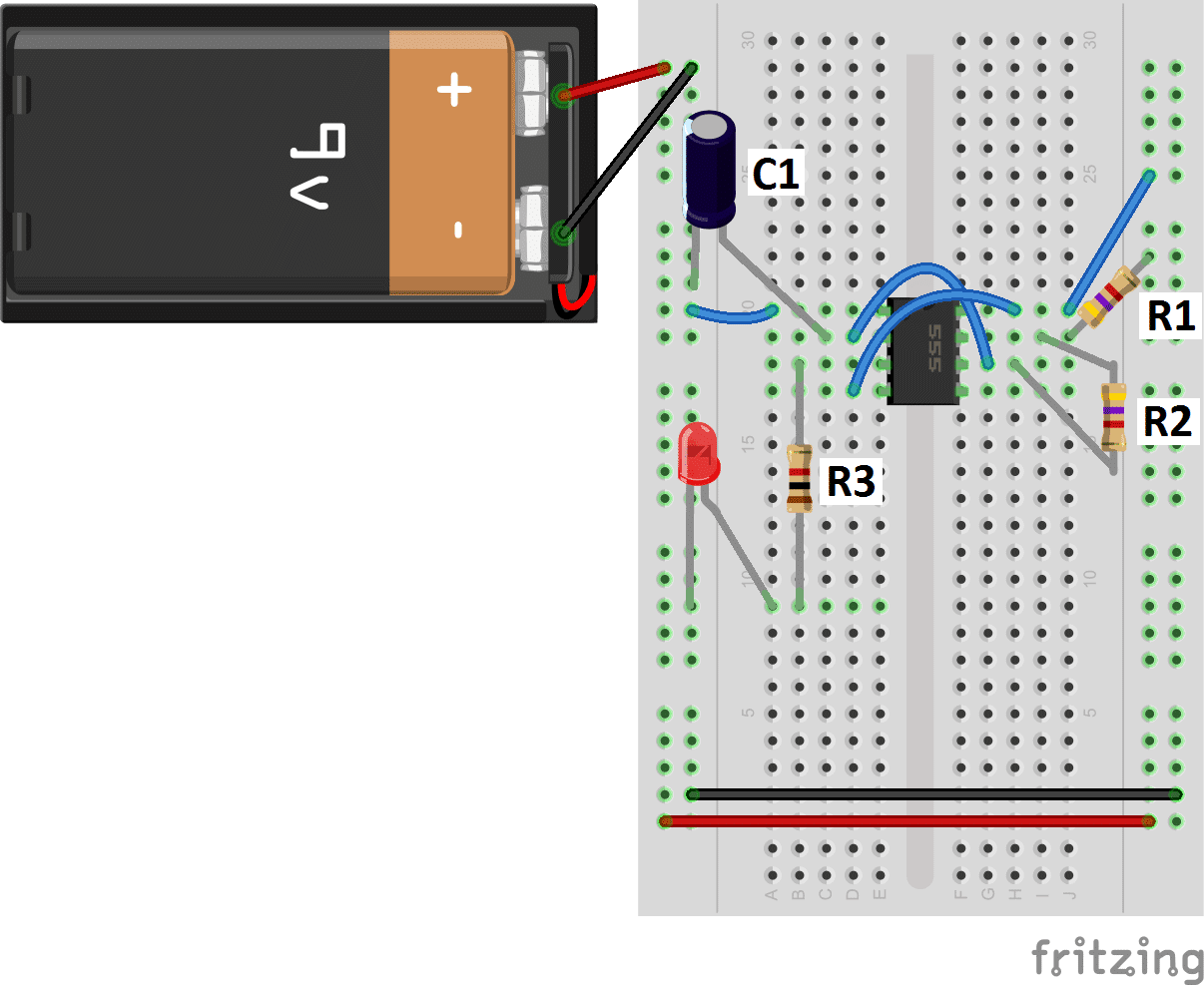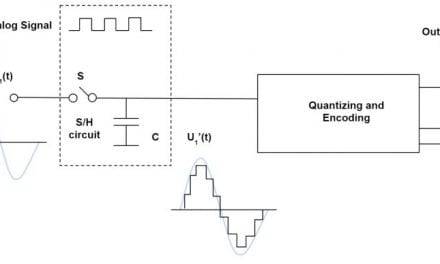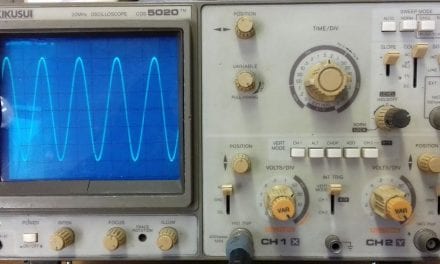In the article What is Electricity?, we discussed that electricity could be defined as the flow of charge. But to understand electricity in more detail, we need to discuss the concepts of voltage, current, and resistance. These three properties are the building blocks of how we model and describe electricity. In this article, we’ll focus on the concept of voltage.
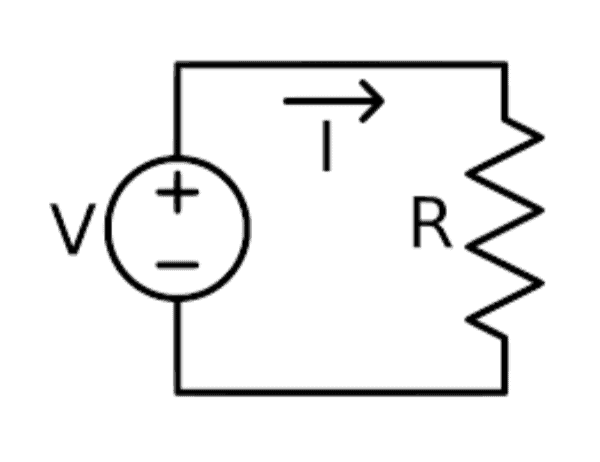
Voltage is the force that makes charges flow. Voltage is also known as the electromotive force or EMF. It is the potential difference between two terminals where one terminal has more electrons gathered compared to the other terminal.
Voltage is measured in Volts (V), which is the derived unit for electric potential. It is named after Italian physicist Alessandro Volta who invented the first chemical battery known as the voltaic pile in 1799:
The Voltaic Pile
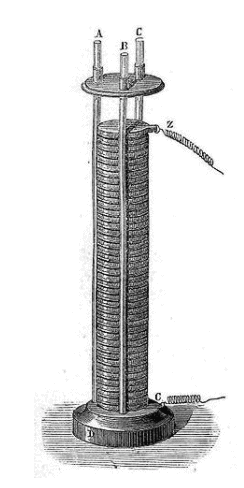
A voltaic pile consists of three different types of discs – one made of zinc, one made of copper, and another made of leather soaked in acid. The acid in the leather strips the zinc atoms of their two valence electrons. The zinc atoms are now missing two electrons, so they ‘steal’ the two valence electrons from copper.
As a result, the zinc plates end up with a lot of extra electrons, and the copper plates end up with a lot of missing electrons. This an example of stored electric potential energy. The difference in electrical potential energy between the zinc and copper plates is known as voltage.
If the two ends of the tower are connected, electrons can flow from the zinc plates to the copper plates, which creates the phenomena of electricity, the flow of charge.
The Definition of Voltage
Voltage is defined as potential energy per charge:
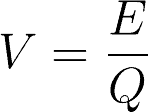
Where V is the voltage, E is the difference in potential energy in Joules, and Q is the charge in Coulombs.
Through this equation, voltage is linked to charge and potential energy. And therefore, 1 Volt is equivalent to 1 joule per coulomb of charge.
Series and Parallel Circuits
There are two types of circuits where voltage behaves differently – series circuits and parallel circuits. This is a diagram of a series circuit:
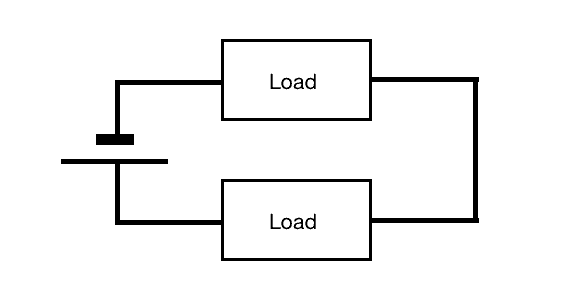
A series circuit consists of components connected in a single path, giving electricity only one way to flow. In this circuit, voltage dissipates in proportion to the resistance of each load/component. The resistance of the components adds up, and the total voltage drop must be equivalent to the EMF of the power source.
This is a diagram of a parallel circuit:
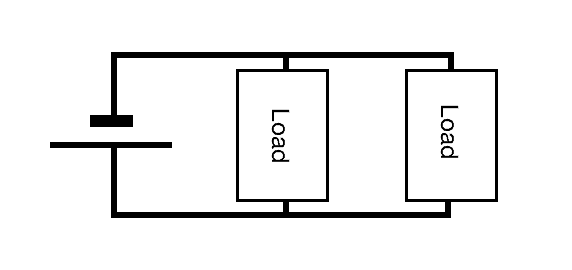
A parallel circuit consists of components that are connected along multiple paths. In this circuit, the voltage is constant along each path, whereas the resistance is calculated through the following equation:

We assume that the total voltage drop of a circuit is equivalent to the EMF of the power source. The potential difference between the positive and negative terminals should always be equal to the potential difference of the battery, as it is assumed that the negative terminal is at 0V, otherwise known as ground (GND).
Batteries are categorized in two main ways – by their output voltage, and by their capacity. Battery capacity is usually measured in amp hours (Ah). An amp hour is the maximum amount of current a battery can supply in one hour. For example, a 12 Ah battery can supply a current of 12 A for 1 hour.
Most small batteries have small capacities, so their amp hours are provided in milliamp hours (mAh). One amp hour equals 1000 milliamp hours.
Battery Configurations
Batteries can be connected in series or parallel configurations, and thier voltage and capacity will be different depending on how they are connected.
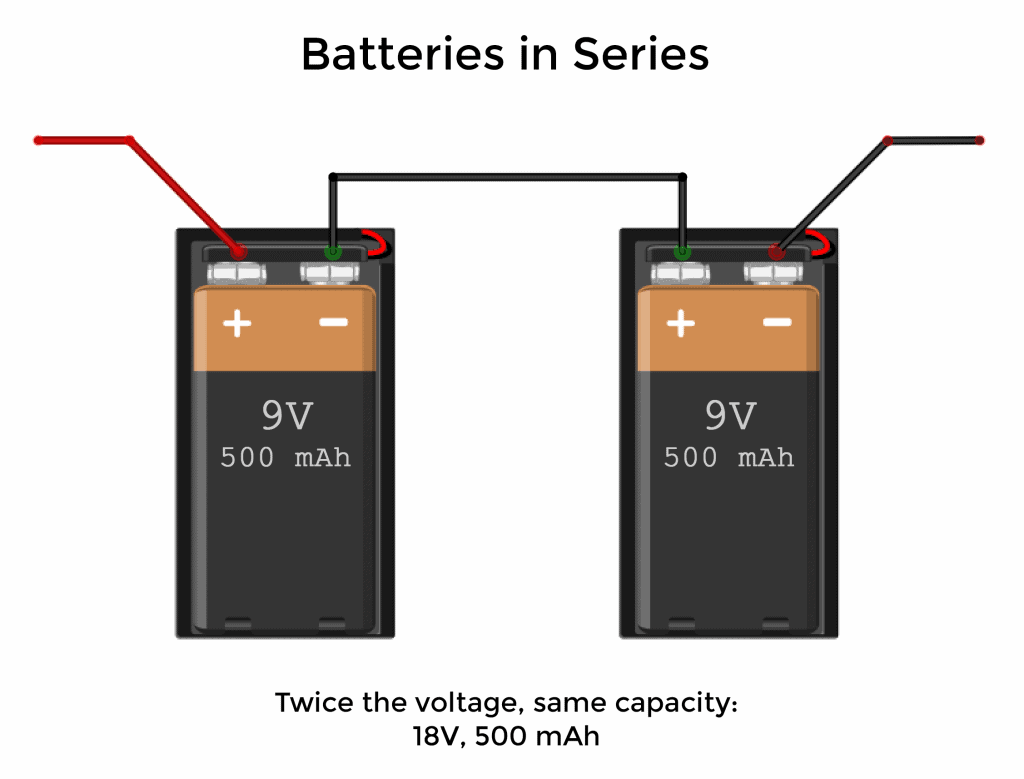
In a series configuration, the capacity remains the same, but the voltages of the two batteries add up. Following the equation E = QV, the total potential energy of the system has doubled. But since the capacity of the batteries remains the same, this configuration is able to supply twice the amount of energy but for the same amp hours.
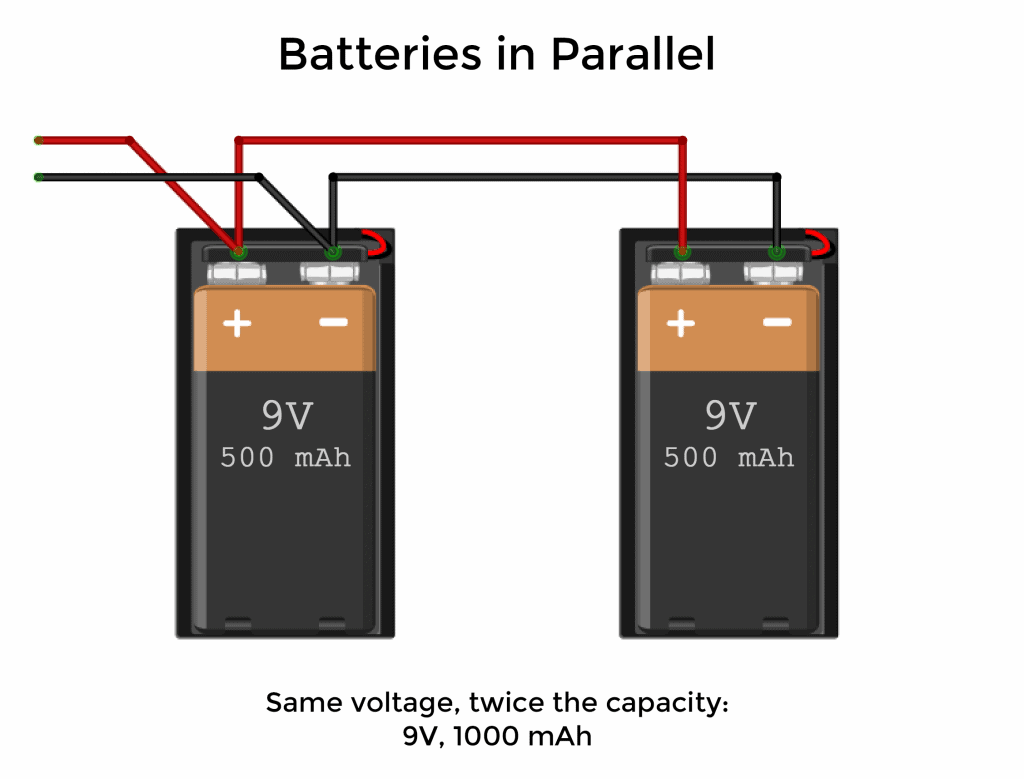
In a parallel configuration, the voltage remains the same, but the capacities of the batteries add up. However, we know that the energy of this system is double that of a single battery. Therefore, this configuration allows the battery to supply twice the current for the same amount of time.
Measuring Voltage
Voltage drop is the decrease of electric potential along the path of current flowing in an electric circuit. The greater the resistance of a component, the larger the voltage drop across its terminals. When current encounters resistance, electric potential energy is lost as it is converted to another form of energy to do work. For example, in resistors, electric potential energy is converted into thermal energy.
We can measure this difference in potential by connecting voltmeter or multimeter in a parallel configuration like this:
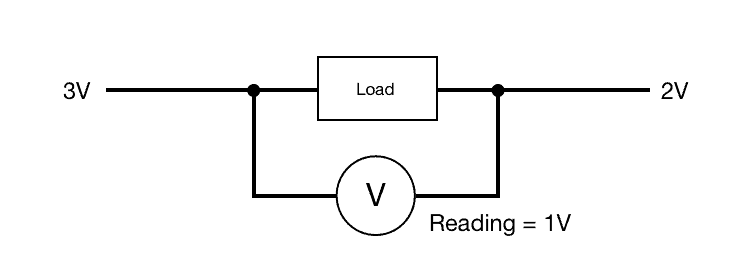
To measure voltage in more complex circuits, we can use the voltage divider rule. This rule only applies to series circuits that have more than one load/component. Connect a voltmeter or multimeter across individual components of the circuit, as shown below.
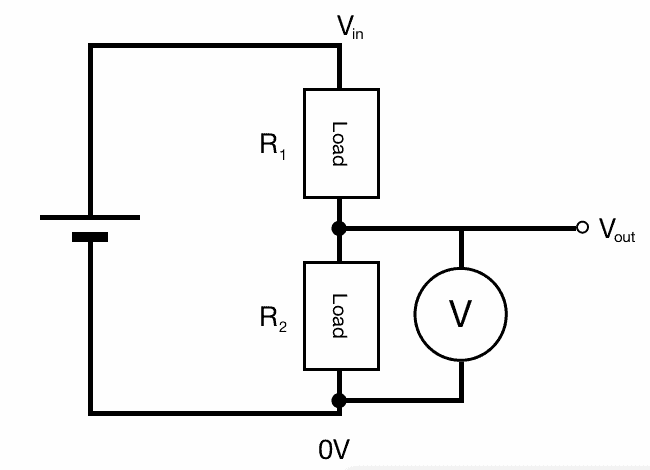
The output voltage (Vout) is proportional to the ratio of the resistance of the load to the total resistance of the circuit. In this case, the voltage out is computed as follows:

Interesting Applications of Voltage
Electricity is essential to our daily lives and many of us are familiar with its uses. However, in order to further illustrate the concept of voltage, there are two applications of electricity that you may not have heard of.
Peltier Tiles
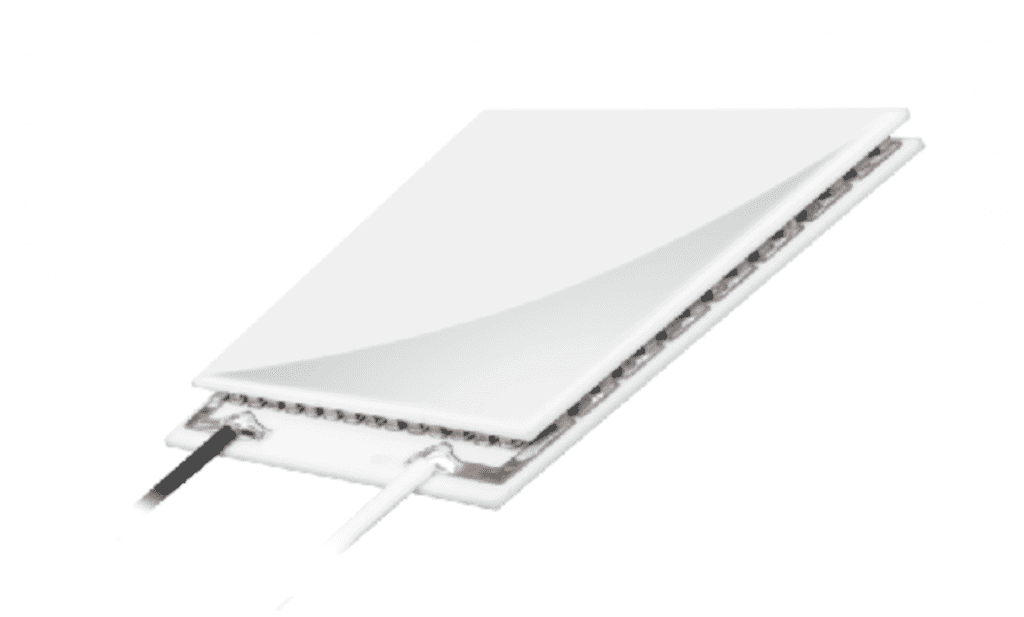
Peltier tiles are tiles that operate using the Peltier effect. When a voltage is applied to the anode and cathode of the tile, a heating effect can be observed on one side of the tile, and a cooling effect can be observed on the other side. The potential difference in electricity is able to create a similar potential difference in temperature. The larger the voltage, the greater the difference in temperature between the two sides of the tile.
Another interesting thing about Peltier tiles is that the effect is reversible. If one side of the tile is exposed to a hot temperature source, and the other is exposed to a cold temperature source, a voltage will be produced. The voltage will depend on the magnitude of the temperature difference.
Piezoelectric Discs

Piezoelectric discs are small sensors that operate using the piezoelectric effect. As mechanical stress is applied to the disc, the deformation of two different materials is able to produce a small voltage that can power small components.
Hopefully this has helped you to understand voltage more. Be sure to leave a comment below if you have any questions or anything else to add…



